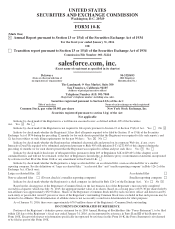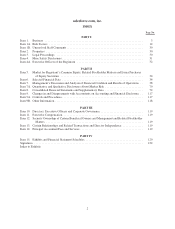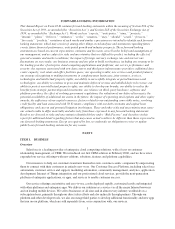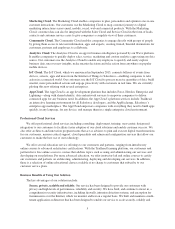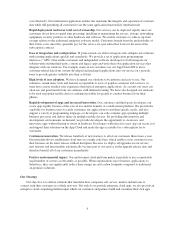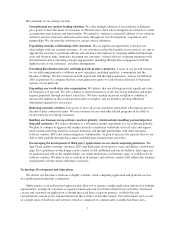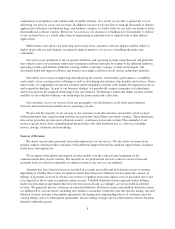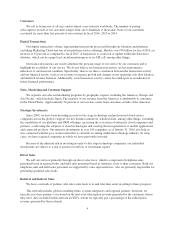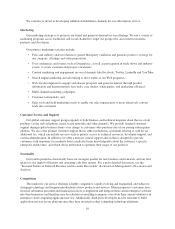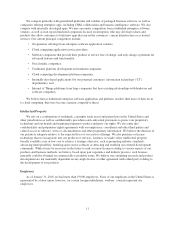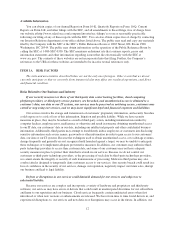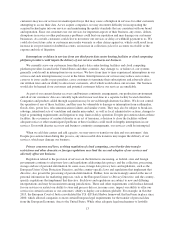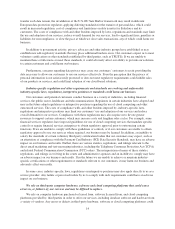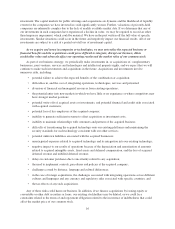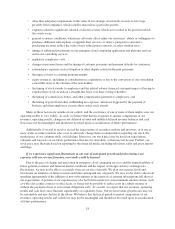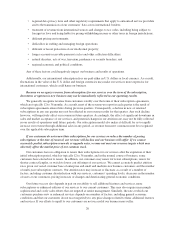Salesforce.com 2016 Annual Report Download - page 17
Download and view the complete annual report
Please find page 17 of the 2016 Salesforce.com annual report below. You can navigate through the pages in the report by either clicking on the pages listed below, or by using the keyword search tool below to find specific information within the annual report.We continue to invest in developing additional distribution channels for our subscription service.
Marketing
Our marketing strategy is to promote our brand and generate demand for our offerings. We use a variety of
marketing programs across traditional and social channels to target our prospective and current customers,
partners, and developers.
Our primary marketing activities include:
• Press and industry analyst relations to garner third-party validation and generate positive coverage for
our company, offerings and value proposition;
• User conferences and events, such as Dreamforce, as well as participation in trade shows and industry
events, to create customer and prospect awareness;
• Content marketing and engagement on social channels like Facebook, Twitter, LinkedIn and YouTube;
• Search engine marketing and advertising to drive traffic to our Web properties;
• Web site development to engage and educate prospects and generate interest through product
information and demonstrations, free trials, case studies, white papers, and marketing collateral;
• Multi-channel marketing campaigns;
• Customer testimonials; and
• Sales tools and field marketing events to enable our sales organization to more effectively convert
leads into customers.
Customer Service and Support
Our global customer support group responds to both business and technical inquiries about the use of our
products via the web, telephone, email, social networks and other channels. We provide standard customer
support during regular business hours at no charge to customers who purchase any of our paying subscription
editions. We also offer premier customer support that is either included in a premium offering or sold for an
additional fee, which can include services such as priority access to technical resources, developer support, and
system administration. In addition, we offer a mission critical support add-on that is designed to provide
customers with responses for incidents from a dedicated team knowledgeable about the customer’s specific
enterprise architecture, and which offers instruction to optimize their usage of our products.
Seasonality
Our fourth quarter has historically been our strongest quarter for new business and renewals, and our first
quarter is our largest collections and operating cash flow quarter. For a more detailed discussion, see the
“Seasonal Nature of Deferred Revenue and Accounts Receivable” discussion in Management’s Discussion and
Analysis.
Competition
The market for our service offerings is highly competitive, rapidly evolving and fragmented, and subject to
changing technology and frequent introductions of new products and services. Many prospective customers have
invested substantial personnel and financial resources to implement and integrate their current enterprise software
into their businesses and therefore may be reluctant or unwilling to migrate away from their current solution to an
enterprise cloud computing application service. Additionally, third-party developers may be reluctant to build
application services on our platform since they have invested in other competing technology platforms.
10



